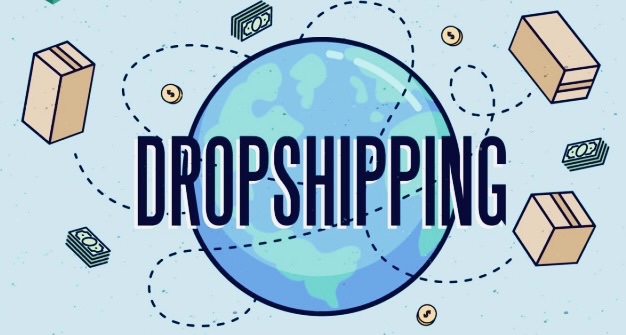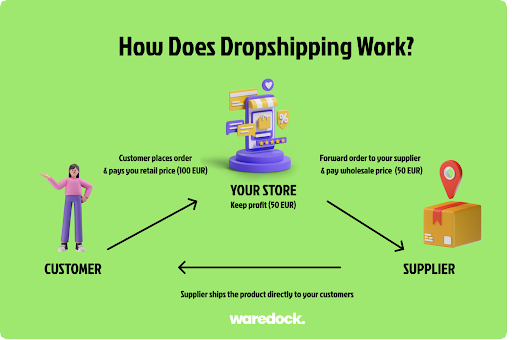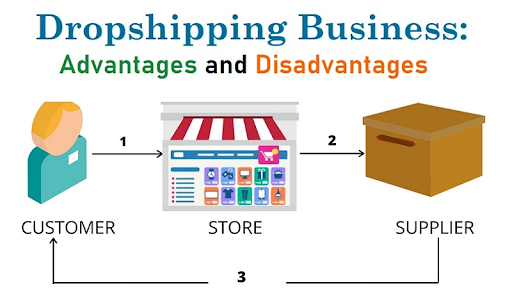What is Dropshipping, and What are the Pros and Cons of Dropshipping?
In the constantly evolving digital age entrepreneurs seek business models with minimum investments and lower risks of losing their inventory. One such revolutionary business model is dropshipping!
– 10 mins

Dropshipping is a business model for selling products online without keeping them in your inventory. You have an online store where you sell products.
You place the same order with your dropship provider, typically a wholesaler or manufacturer, straight after a customer places an order on your dropship store. Your dropshipping supplier handles the rest of the things at that point. The dropshipping provider directly ships the product to the customer. A warehouse facility is no longer necessary—thanks to the dropshipping business model. You don’t need to bother about logistics, shipping, or stock management.
Let us delve deeper to learn more about dropshipping, how to choose the best suppliers and the pros and cons of dropshipping.
Understanding dropshipping
In a dropshipping business model, the online retailer does not stock physical stocks. The retailer sells products to his customers by placing the same order to the supplier or the wholesaler received from the customer. The supplier or the manufacturer ships and gets the product delivered directly to the customers.
However—there is another method for you to get engaged with dropshipping. You can be the dropshipper yourself—keeping stock, taking orders, and shipping the products on behalf of another retailer.
In this article— we will focus on the model where you will be the online retailer, passing your customers’ orders onto your supplier for shipment.
The products sold in this online business model are never handled, stocked, or shipped by the dropshipper. Dropshipping enables you to offer a variety of products without having industry-specific expertise.
By establishing online connections with distributors or other wholesalers—dropshipping enables merchants to serve as both their suppliers and manufacturers. In other words, the retailer takes on the intermediary role without holding any inventory.
Here’s an example of how dropshipping works:
For instance, X decides to launch an online workout equipment business.
X will contact various exercise equipment distributors and partner with them rather than buying and keeping the devices.
A retail price that is greater than the wholesale price X pays to the suppliers is then listed for the items on the website.
When a client puts an order on X’s website—X accepts the payment from the customer along with X’s profit margin and then transmits the order with the customer’s shipping details to the selected wholesaler.
The goods are packaged and shipped straight to the client by the wholesaler.
X can concentrate on marketing and customer service because X doesn’t have to worry about managing inventory or delivery. While dropshipping is practical— X has less control over product availability and shipping schedules, so X must select trustworthy suppliers to guarantee a satisfying client experience.
How to choose the best dropshipping suppliers
Your online business’s success depends on selecting the best dropshipping vendor. A trustworthy and capable supplier will contribute to smooth operations, prompt delivery, and high-quality products—increasing client satisfaction and encouraging repeat business.
Here are some essential procedures to choose the top drop-shipping vendor:
Product quality and variety: Look for suppliers who offer a wide range of high-quality products. Try getting samples and reading product reviews to evaluate the quality in person. A diversified product line also lets you provide your clients with larger options.
Shipping times: Dropshipping requires quick shipping. Select vendors who can provide goods to your clients on time. Customer discontent brought on by prolonged shipment periods might harm your reputation.
Stability and dependability: Look at the reputation and performance history of the vendors. Seek out well-established businesses with a track record of dependability and stability. Check out client testimonials and ask other drop shippers for recommendations.
Pricing and fees: Evaluate pricing from various sources to ensure you can keep retail prices competitive while still making a profit. Take into account any additional expenditures that may affect your profit margins, such as membership fees or dropshipping fees.
Support and communication: In the dropshipping industry, effective communication is essential. Pick suppliers that respond to questions and provide helpful customer service. Effective problem-solving and return handling depends on clear communication.
Technology integration: Choose vendors who offer up-to-date, user-friendly interfaces or APIs for managing inventories and processing orders. Operations are made simpler by seamless connectivity with your online store platform.
Stock availability: Verify that the supplier has enough of the items you want to offer in stock. A steady supply of goods prevents backorders and stockouts.
Return policies: Recognize the return and refund policies of the supplier. Customers’ trust in your company might increase if you have a tolerant return policy.
Location: Pick vendors who serve your target market locally. This may result in shorter shipment times and sometimes cheaper shipping overall.
Legal Compliance: Verify that the vendor complies with all applicable laws, rules, and industry standards.
Scalability: Take into account whether the supplier can expand with your company. A flexible provider readily handles increased order quantities.
Environmental and ethical considerations: Some clients highly value these considerations. Think about vendors who share these principles.

Pros and cons of dropshipping
Like every other business, dropshipping comes with a set of advantages and disadvantages. While the minimal startup costs make dropshipping an accessible option, it is essential to explore all its pros and cons to have a clear picture before venturing into dropshipping business.

Dropshipping pros
1. Dropshipping is a low-cost, low-risk business
The key advantage of minimal initial investment makes dropshipping a low-cost business option.
Starting your dropshipping business does not require an investment in inventory as you need not prepurchase stocks to start your dropshipping business.
When you get started, the only financial concern you should have is the monthly costs for an e-commerce platform, which should be relatively cheap if you pick the appropriate platform.
While you handle product promotion, your suppliers pay for the storage and management of your items. You may operate a dropshipping business from home without having to pay for an office location.
With dropshipping, you effectively take on the role of a “middle man,” adding a markup to items you don’t purchase or deliver, making this business low-cost and low-risk.
2. Flexibility with a wide range of products
You can sell whatever products you want with dropshipping. You have access to various items from many dropshipping suppliers, which makes you flexible in choosing the market segment you want to dropship in.
This is a significant benefit of not needing to purchase anything in advance. You only need to withdraw your present items from your store and import new ones from your dropshipping provider if they aren’t selling well.
This flexibility enables you to test out various niches and identify lucrative ones. With little risk, you may try a wide range of items, including new ones.
Connecting a dropshipping supplier’s app to your e-commerce platform is typically all that is required to begin working together.
3. You can run a dropshipping business from anywhere
Dropshipping, primarily being an online business, can be managed from anywhere so long as you have a computer and an internet connection.
Typically, you can operate a dropshipping business from anywhere, even while you’re on the go. For remote workers and digital nomads, this freedom offers a lifestyle benefit.
You do not need to worry about finding a physical place for your business to function, which may take a lot of time and money.
4. Growing your dropshipping business is easier
Growing your business as a drop shipper is easier than traditional businesses. To increase sales, you have to plan strategies, implement them through your team in the market in traditional businesses, analyze the progress and so on. You and your team must put in consistent efforts to double the sales.
While as when you run a dropshipping business, you can carry on running it as much as normal while your suppliers handle the manual labour. The burden of more work and order processing is falling on your suppliers.
However, there are no shortcuts to success. It still requires effort, dedication, and strategic planning. You need to put your efforts in the right direction as far as the following aspects are concerned:
- Creating a professional online store
- Selecting the right niche
- Offering quality products
- Providing effective product descriptions and images
- Optimizing for mobile
- Expanding product range
- Leveraging social media
- Working on customer feedback, reviews and testimonials.
5. Low startup costs in comparison to physical stores
In dropshipping business, you don’t need to maintain physical stocks. This saves you from investing in warehouse costs.
More so, you don’t have to incur costs on packaging or shipping as the supplier undertakes the job of shipping the items directly to the customers. In this way, you are investing less in your online business when compared to traditional stores.
Although the costs are too little, you must have some way to start your business—leveraging platforms like Shopify would make a difference.
Dropshipping Cons
1. Limited control over product quality
Your wholesaler or service supplies the orders procured by you from your clients. Under this arrangement, as a dropshipper, you cannot see and touch the products being supplied to your clients—making you unable to have control over the product quality.
You only have any control over the prices and types of goods you offer. Under such circumstances, you won’t be able to quickly address and resolve any complaints your customers may have about it.
Running back and forth between your business and suppliers adds a lot of unnecessary work for you and your team. It may negatively affect client satisfaction.
2. Low profit margins
Although you invest more money in traditional retail, so are the returns. Contrary to this, your returns need to be higher when it comes to dropshipping.
This implies you must do much more business to keep your venture going so your profit margins increase, and your business grows properly. A dropshipping supplier provides you with a single item each time you place an order, in contrast to a typical wholesaler who would offer you their products in bulk.
To sustain your business, you have to put a lot of effort into increasing the margin of profits to pay for your running expenditures and expenses related to marketing/advertising, website upkeep, SEO, including order management, and office hours coverage.
3. Dropshipping business is competitive
In dropshipping, the vendors fulfilling your orders must be simultaneously supplying products to various dropshippers like you, making it challenging for you to have a monopoly and uniqueness of the product.
Having many dropshippers, the vendor, at times, may have some preferential aspects with some dropshippers, making it difficult to get products and services as desired.
Due to this, it is extremely crucial to set up a solid eCommerce marketing plan and differentiate your business.
4. Customer service can be challenging
Since you don’t have direct control over the logistics and supply chain, handling customer service issues are stressful and challenging.
Handling customer inquiries and complaints is difficult as the issues lie with your suppliers. You will find it hard to provide shipping updates to your customers, especially if the supplier has several dispersed warehouses that each send a portion of the order, arriving at various times through several shipments.
If your customer has a problem that you cannot resolve, you must first address it with your dropshipping provider—this process might take some time.
5. Dropshipping requires technical knowledge
Although dropshipping only sometimes requires you to be technically well-versed, you must have basic technical skills to run your online store. If you cannot get started with your store and integrate with your vendors, selling through your online store will take a lot of work.
Having the basic technical skills to undertake your website maintenance and run digital marketing operations will be a plus.
The Final Word
Dropshipping can be an inexpensive strategy to build your online business. However, it comes with a set of advantages and disadvantages. The benefits include inexpensive upfront expenses, a galaxy of products, and a flexible location—you will encounter challenges like low-profit margins, dependency on suppliers, and possible shipping problems. You need to weigh them before you get started with dropshipping business and devise workable solutions to deal with its challenges.

Surrinder Pandita is a content writer at RankHandy. He has more than 6 years of experience writing for the marketing, HR, and business sectors and aims to provide high-quality content.





